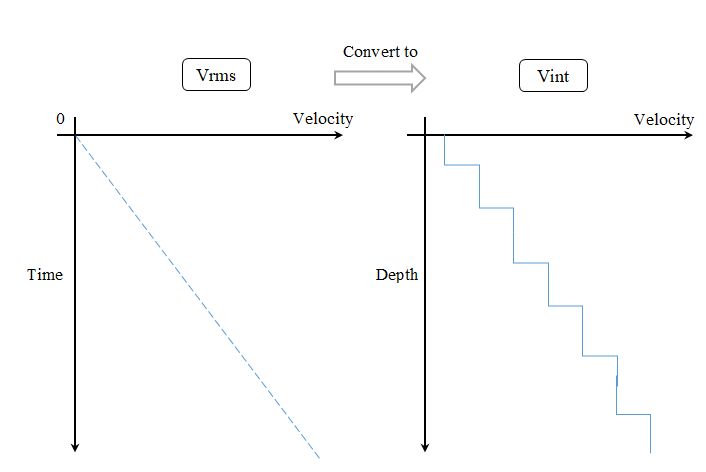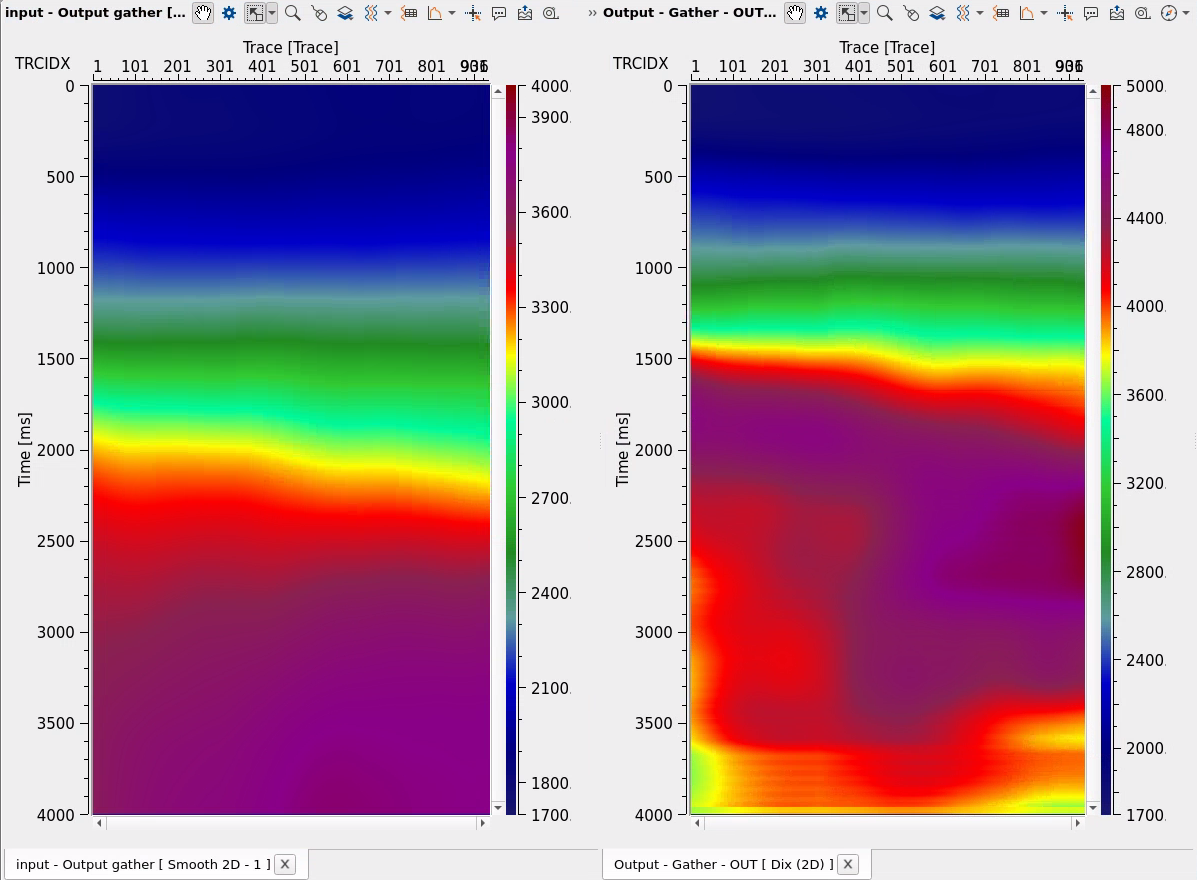2D RMS velocity [time domain] conversion into Interval velocity [depth domain] (PSDM stage)
![]()
![]()
Velocity conversion from the time domain to the depth domain is a crucial step in seismic data processing, enabling accurate subsurface imaging. In the time domain, seismic velocities are typically represented as root-mean-square (RMS) velocities, which describe the average velocity of seismic waves as they travel through multiple layers of the Earth's subsurface. However, for depth imaging and structural interpretation, interval velocities - representing the velocity within individual geological layers - are required. The conversion from time to depth is achieved using the Dix formula, which extracts interval velocities from RMS velocities by considering the changes in travel time and velocity at different depths.
The Dix formula is given by:

where Vint is the interval velocity between two depth levels, Vrms1, and Vrms2 are the RMS velocities at two-way travel times t1 and t2, respectively. This equation allows for the estimation of interval velocities by analyzing the changes in RMS velocities with respect to time. Since RMS velocities are derived from seismic stacking processes, the Dix formula enables geophysicists to transform these velocities into a depth-consistent representation, which is essential for constructing accurate geological models.

Applying the Dix formula is particularly important in complex geological settings where velocity variations significantly impact seismic wave propagation. Proper velocity conversion helps in depth migration, well-tie calibration, and hydrocarbon reservoir characterization. However, errors in RMS velocity picking or assumptions about layer homogeneity can introduce inaccuracies in interval velocities. To improve precision, additional techniques such as tomographic inversion and well-log calibration are often employed.
![]() There are two new modules for velocity conversions - Vint from Vrms (2D data Dix 1D inversion) and Vint from Vrms (3D data Dix 1D inversion), we recommend you use them.
There are two new modules for velocity conversions - Vint from Vrms (2D data Dix 1D inversion) and Vint from Vrms (3D data Dix 1D inversion), we recommend you use them.
![]()
![]()
Gather - IN - Input RMS velocity gather (uploaded into RAM).
![]()
![]()
![]()
![]()
Skip - switch-off this module (do not use in the workflow).
![]()
![]()
Gather OUT - output interval velocity.
There is no information.
![]()
![]()
There is no actions.
![]()
![]()
There in an example for conversion Vrms into Vint via Dix (2D) module:


![]()
![]()
 If you have any questions, please send an e-mail to: support@geomage.com
If you have any questions, please send an e-mail to: support@geomage.com
